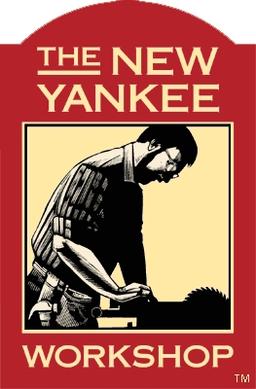It’s a little scratch and dent given it’s made out of offcuts, scraps and extras from other projects but I think it came out okay. Three coats of fake “tung oil” finish and it came up to a nice warm semi-gloss, and ambered up the pine enough to take the edge off the grain.

Detail shot of the side hung, center guided drawer and its rabbeted dovetail front and shop made handle.
Yeah I’m going on a bit of a victory lap here, I’m pretty happy with how this one turned out.


I’ve played around a bit with woodworking, and have only used cheap 1x and 2x spf lumber to avoid wasting expensive wood, but it often warps pretty bad. Especially every time I’ve tried to glue-up 1xs to make tops or panels. Is there a trick or something, or is better wood needed?
You mean like this? This was a spruce 2x4 I bought at Lowe’s for a few bucks. I’d intended to use this as a keyboard tray on my desk. These days I mostly use it as shop clutter.
This was one of the first things made after getting my jointer and planer, back there. I glued up that panel, put it through my planer, it was dead flat. I turned my attention to routing the grooves in the breadboards, and then when it was time to mill the tongues on the ends of the panel, it had already warped to the point it rocked on the table saw.
The cause of this calamity is moisture. Wood absorbs or releases moisture trying to equalize with the local humidity. If you’ve ever taken a kitchen sponge out of the package, and it’s perfectly flat and rectangular, then you soak it and it swells up, and then when you come back and it’s dried out it’s all curled up at the corners, you’ll have an intuitive grasp of wood movement. It changes size, and quite often shape, as it absorbs or releases moisture.
Construction lumber is not dried as much as furniture grade lumber is. The average SPF 2x4 might measure 15 or 20%, the 4/4 pine at the cabinetry supply store will measure like 8 or 9%. Build something out of construction lumber, and it has more drying to do to reach equilibrium with the air, meaning it will twist more.
I got bonus movement in my panel up there because I resawed a 2x4. Much like you and me, a board is usually driest on the outside and wettest in the middle. Resaw it into halves and now you’ve got two brand new 1x4s each with a dry side and a wet side. One side of the board is suddenly going to do a lot more drying than the other. Helm, set course for the twist system, maximum warp. Engage.
The way a board is sawn out of the log will also effect how it moves. Construction lumber is almost always plain sawn: take a tree and slice it lengthwise like deli meat. In most boards this produces the funky cathedral grain on the faces and the arc-shaped end grain you can see in the top and drawer front of my nightstand. Because of the asymmetry in the growth rings when cut like this, these boards tend to cup as they dry. Quarter sawn lumber is more complicated to make and wastes a little more of the tree, but the growth rings run more or less straight through the board. You’ll see straight grain on the faces, like on the face frame of my cabinet. This doesn’t warp as much because the forces inside the board will be more symmetrical.
So, with all that in mind, here are some things you can do to reduce warping and wood movement in your projects: